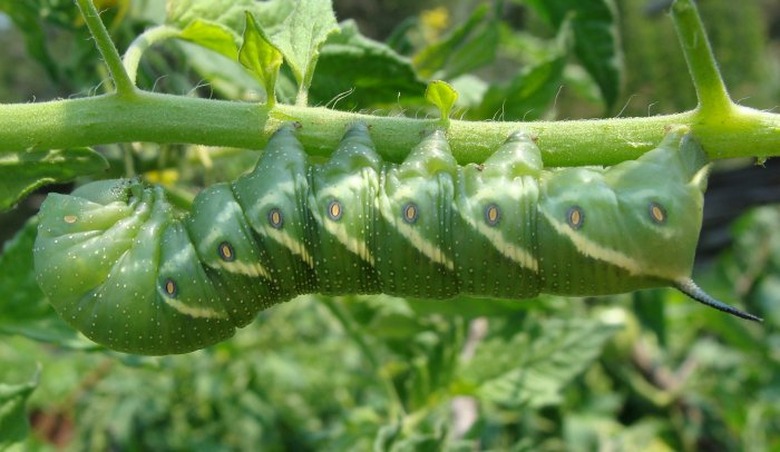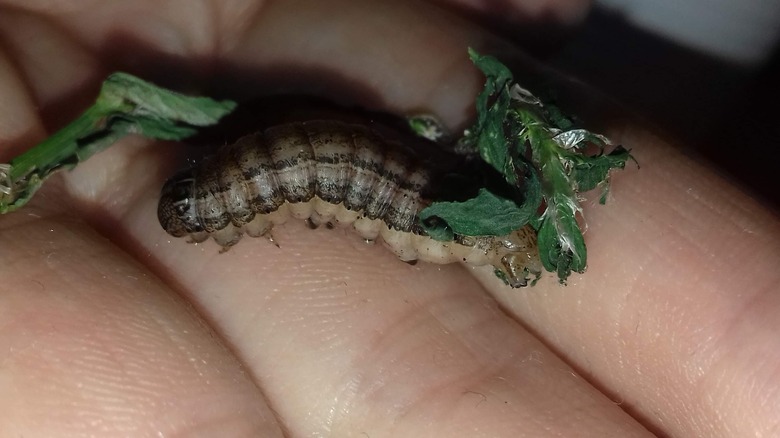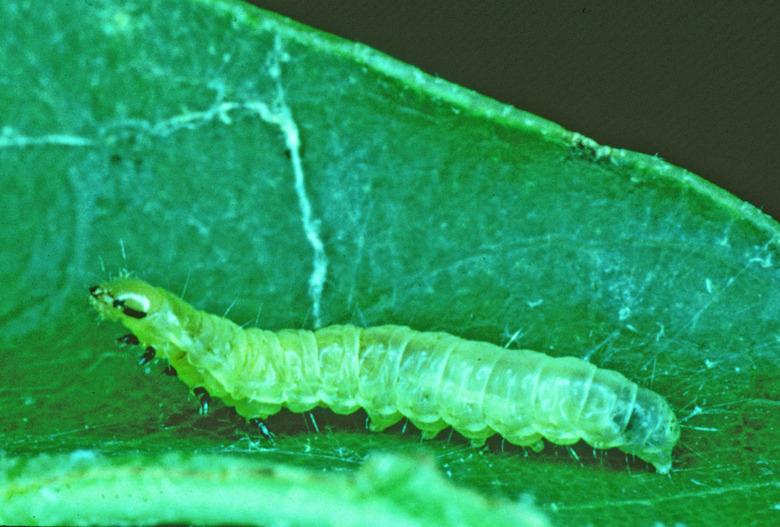Why Are There Green Caterpillars In My Yard?
Bright green caterpillars, members of the Lepidoptera order of insects, turn into moths or butterflies through the process called metamorphosis. There are about 14,000 species of moths and butterflies in North America, but most gardeners will encounter only a tiny percentage of them.
Not all Lepidoptera begin life as tiny green caterpillars. Some, like the woolly bear that reportedly predicts winter weather by the width of its stripes, are brown, black, striped or spotted.
Green Caterpillars in the Garden
The green caterpillars in your yard are there for the food. Once they become larvae, their mission is to eat and eat until it's time to transform into pupae and complete the process of becoming a moth or butterfly.
Most of them are there to eat blades of grass, though others feed on clover or weeds that might be growing in your yard. You may also find tiny green worms on host plants, like vegetables, flowers, trees and shrubs in the yard.
While discovering insects munching on your prized vegetation in your garden may be cause for alarm, caterpillars are generally beneficial insects because the moths or butterflies they turn into are important pollinators. Others become food for birds.
Some green caterpillars, like the monarch butterfly larvae that eat milkweed (Asclepias spp., U.S. Department of Agriculture plant hardiness zones 4 to 9), have coevolved with specific plants that become their sole source of food. If the damage to your grass or plants is not too great, try thinking of green caterpillars as an important part of your yard's ecosystem.
Once they become pupae, they can no longer harm your plants.
Green Caterpillars That Can Damage Yards
Striped grass loopers (Mocis latipes) are small green caterpillars that reach about 1.5 inches in length at maturity, with a stripe on each side of their body. The name looper derives from the way their back forms an arch as they pull their hind feet toward their front feet when they crawl. They're one of the many varieties of caterpillars colloquially called inchworms. Armyworms (Pseudaletia unipuncta or Mythimna unipuncta) range in color from pale green to yellowish-brown and have long yellow-brown stripes and brown heads. They belong to the largest family of insects in the Lepdoptera order, Noctuidae. Like the grass looper, the 1.5-inch-long caterpillars are active from spring to fall, chewing on blades of grass and causing dead spots in the yard. This variety of armyworm is not considered a serious pest. Green cloverworms (Hypena scabra) grow to about an inch long and have a white stripe on each side when mature. While they are most commonly considered a soybean or alfalfa plant pest, you may find them in your yard if you have a lot of clover.
Other Green Caterpillars Found in Home Gardens
Tomato hornworm caterpillars (Manduca quinquemaculata) and their cousins tobacco hornworms (Manduca sexta) are among the largest green caterpillars at 4 inches in length and have a horn-like protrusion on the last segment of their body. While these garden pests prefer tomato plants, they also eat potato, eggplant and pepper plants. Hornworms feed on the upper leaves of plants and then work their way down to lower leaves and the fruit or vegetable.
If you see little green worms hanging from your trees, they're probably oak leafrollers (Archips semiferanus) or oak leaftiers (Croesia semipurpurana). Also familiarly called inchworms, these tiny light green caterpillars range in length from 1/4 inch to 1 inch. They feed on the new leaves of oak, pecan, walnut and hackberry trees.
Some sawfly larvae are green. Sawflies do not belong to the order of insects called Lepidoptera that turn into butterflies and moths. Instead, they are Hymenoptera and become flies, bees, wasps and ants after metamorphosis. The dusty birch (Croesus latitarsus), elm (Cimbex americana) and European pine (Neodiprion sertifer) sawflies are all green caterpillars that can cause significant damage to trees and shrubs in the landscape.
References
- PennState Extension: A Case for Caterpillars
- Michigan State University Extension: Growing Milkweeds for Monarch Butterflies
- Utah State University: Loopers
- University of Missouri Extension: Caterpillars in Your Yard and Garden – Armyworm
- University of Minnesota Extension: Tomato Hornworms in Home Gardens
- University of Florida IFAS Extension: Green Worms in My Yard
- University of Missouri Extension: Caterpillars in Your Yard and Garden – European Pine Sawfly


